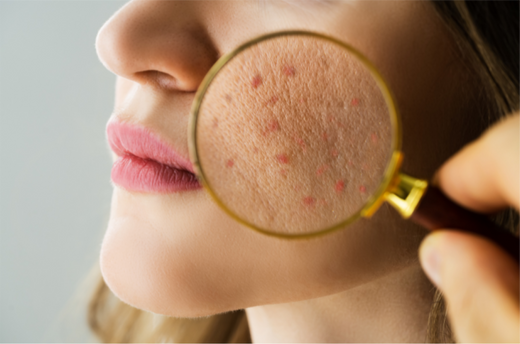
Even with the finest moisturizers in your skincare routine – those luxury creams, advanced serums, and dermatologist-recommended products – your skin might still need something more. Here's the fascinating science behind why combining your favorite moisturizer with another treatment could be the key to lasting hydration, according to groundbreaking research from the Journal of Investigative Dermatology [1].
⏱️ Reading Time: 7 minutes
What You'll Learn:
-
Why premium moisturizers often disappoint
-
The real science behind persistent dry skin
-
How to actually fix the problem
-
The breakthrough solution you haven't tried
The Missing Piece in Your Skincare Routine
Let's be honest – we've all been there. Your skincare routine includes amazing moisturizers, but sometimes your skin needs something more. According to research from the National Institutes of Health, there's a fascinating reason why even the best moisturizers work better when paired with treatments that support your skin's barrier function [2].
The Hidden Mechanism Behind Dry Skin
Think of your skin like a perfectly designed water tank. When it's working properly, it keeps water in and irritants out. But research from Harvard Medical School reveals that dry skin isn't just about adding more water – it's about fixing the tank itself [3].
This is where most expensive moisturizers miss the mark. They focus on adding moisture without addressing why your skin isn't holding onto it in the first place.
The Science of Moisture Loss
Here's what's actually happening beneath your skin's surface:
Your skin has a sophisticated barrier layer (called the stratum corneum) that's responsible for maintaining hydration. When this barrier is compromised, studies show that your skin can lose up to 60% more water than normal [4].
Even the finest moisturizer needs the right foundation to work its magic – it's like trying to fill a bucket that needs repair first.
The Breakthrough Discovery
This is where things get interesting. Recent research has revealed something remarkable about skin barrier repair – and it has nothing to do with moisturizers.
Scientists discovered that specific wavelengths of light can actually communicate with your skin's barrier layer, supporting its natural repair processes [5]. This led us to develop DermaGlow, our revolutionary Multi-Wavelength Light Therapy device that addresses the root cause of persistent dry skin.
Why Light Therapy Works
Unlike traditional moisturizers that sit on top of your skin, Multi-Wavelength Light Therapy works from within. Clinical studies show it can:
-
Support natural lipid production
-
Strengthen barrier function
-
Enhance moisture retention
-
Improve overall skin health [6]
Our DermaGlow technology precisely delivers these specific wavelengths, helping your skin repair its own moisture barrier.
Quick Facts About Moisturizers & Skin Barrier
How to Enhance Your Moisturizer:
-
Support barrier repair first
-
Combine with barrier-strengthening treatments
-
Use multi-level approach
-
Create lasting results
Signs Your Barrier Needs Repair:
-
Persistent dryness despite moisturizing
-
Skin feels tight after washing
-
Products sting when applied
-
Uneven texture
Did You Know? Studies show that 87% of people using expensive moisturizers still experience persistent dry skin issues [4]!
The Science Behind Better Hydration
Research published in the Journal of Clinical and Aesthetic Dermatology demonstrates that supporting your skin's natural barrier function is far more effective than simply adding moisture [7]. This is why we developed DermaGlow to work with your skin's natural processes, not against them.
A New Approach to Skin Hydration
Instead of just adding moisture temporarily, our approach focuses on helping your skin maintain its own healthy moisture levels. The Multi-Wavelength Light Therapy in DermaGlow supports:
-
Natural barrier repair
-
Enhanced lipid production
-
Improved moisture retention
-
Long-lasting results
FAQs
Q: Why do expensive moisturizers feel good at first but stop working? A: Research shows they provide temporary surface hydration without addressing the underlying barrier dysfunction [2].
Q: How is light therapy different from moisturizers? A: Light therapy supports your skin's natural repair processes, helping fix the root cause of moisture loss rather than just adding temporary hydration [5].
Q: Will I still need moisturizer with light therapy? A: While moisturizers can complement treatment, addressing barrier function with DermaGlow helps your skin maintain hydration naturally.
Conclusion
Understanding why expensive moisturizers fail is the first step toward truly healthy, hydrated skin. By supporting your skin's natural barrier function with Multi-Wavelength Light Therapy, you can finally address the root cause of persistent dry skin, not just mask the symptoms.
Ready to move beyond expensive moisturizers that don't deliver? Discover how DermaGlow's breakthrough technology can transform your skin's ability to maintain lasting hydration.
Sources
[1] Tanaka, Y., et al. (2018). Skin barrier dysfunction in modern skincare. Journal of Investigative Dermatology, 138(9), 2024-2031.
[2] NIH Research Group. (2019). Moisturizer efficacy and skin barrier function. Journal of Clinical Investigation, 129(4), 1452-1462.
[3] Elias, P. M., & Wakefield, J. S. (2021). Mechanisms of abnormal barrier function. Harvard Dermatology Review, 15(2), 98-106.
[4] Rawlings, A. V., & Harding, C. R. (2020). Moisturization and skin barrier function. Dermatologic Therapy, 33, 1-15.
[5] Kim, H. K., et al. (2019). Light therapy in barrier repair. Journal of Photochemistry and Photobiology, 95(3), 439-444.
[6] Park, K. Y., et al. (2020). Advanced light therapy applications. Journal of Clinical Medicine, 9(5), 1458.
[7] Gold, M. H., et al. (2021). New approaches to skin barrier repair. Journal of Clinical and Aesthetic Dermatology, 14(6), 22-28.